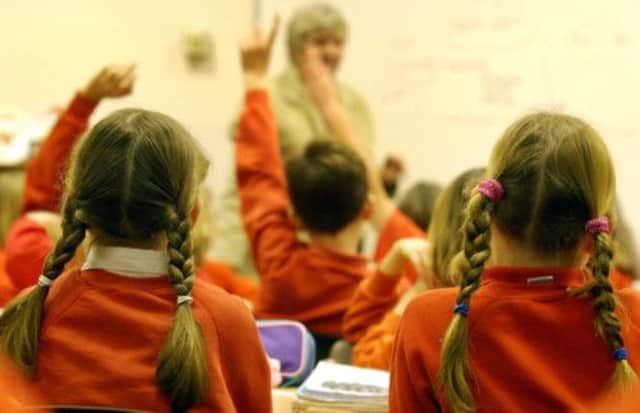Plan to teach Gaelic in every Scots primary school


Education Scotland has said Gaelic should be put at the centre of an ambitious plan to teach children two foreign languages at primary school. The Scottish Government is currently considering a new approach to language learning, which would see pupils introduced to a second language in P1, and a third no later than P5.
This is known as the 1 + 2 Approach to language learning, meaning pupils are taught in their mother tongue and two additional languages.
Advertisement
Hide AdAdvertisement
Hide AdPublishing its Gaelic Education Plan yesterday, Education Scotland said it was important to recognise the language’s “valuable contribution to Scotland’s heritage” as well its status as an official language. The quango said it hoped to see Gaelic at the “heart” of language learning while also increasing the impact of Gaelic-medium bilingual education.
But critics said parents did not support the expansion of the language outside its “indigenous communities”, especially when there are other demands on education budgets.
Bill Maxwell, chief executive of Education Scotland, said, “Our Gaelic Language Plan sets out to show how we will embed the promotion and use of Gaelic across all of our work. I look forward to receiving views on the proposals in the draft plan.
“I am committed to ensuring improvements in the health and quality of Gaelic education are a key strand of the overall impact we seek to have in improving Scottish education.”
Revealing its first Gaelic language plan, the quango said: “This approach assists with placing Gaelic education at the heart of Language Learning in Scotland: a 1+2 Approach , while increasing the impact of Gaelic medium bilingual education.”
Scottish Conservative education spokeswoman Liz Smith said: “We are fully supportive of the expansion of Gaelic in its indigenous communities but we do not believe it should be taught to every child.
“That is not something that parents and teachers want, nor indeed does the Gaelic community itself, which would like to see the additional resources for Gaelic targeted in the most appropriate areas. Parents have made it very clear indeed that they want the primary focus to be on improving the quality of basic English skills and then to develop additional languages according to the needs of the individual school and, most importantly, according to the needs of employers and the economy.”
Experts have told the Scottish Government that while its aim of introducing a 1+2 strategy is “laudable”, it is likely to be hamstrung by a lack of suitably qualified teachers, a situation which would only be rectified by a big investment in teacher training.
Advertisement
Hide AdAdvertisement
Hide AdTina Woolnough, of the National Parent Forum, said: “Our position is that we are broadly supportive of 1+2. We think Scotland doesn’t do modern languages will enough or extensively enough.
“If Gaelic is one of the “plus 2” languages that would be fine. However, the reality at the moment is that it’s difficult enough to find teachers who speak French or German and many parents question the need to learn German.
“It’s an aspiration that is being expressed here (by Education Scotland). It not necessarily the particular language which matters, but what you learn from picking up a foreign tongue.”
A spokesman for the Educational Institute of Scotland (EIS), Scotland’s largest teaching union, said: “While providing every child with the opportunity to learn Gaelic is a laudable aim, it would present some practical difficulties – including a shortage of fluent Gaelic speakers qualified to teach in schools.”
John Angus MacKay, chief executive of Bord na Gaidhlig, said its National Gaelic Language Plan had identified the need to have 800 children entering Gaelic-medium education by 2017.
He said: “For this to be achieved, there is a need to strengthen the infrastructure of Gaelic education and learning generally and ensure the recruitment of an trained workforce in order to service the expansion of Gaelic education.”
A Scottish Government spokesman said: “The Scottish Government is committed to ensuring every pupil has the chance to learn two languages on top of their mother tongue in primary school. Our ongoing promotion of the Gaelic language means it is a key part of this process.”